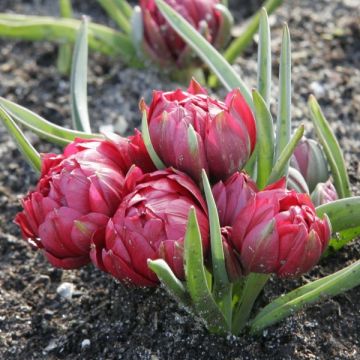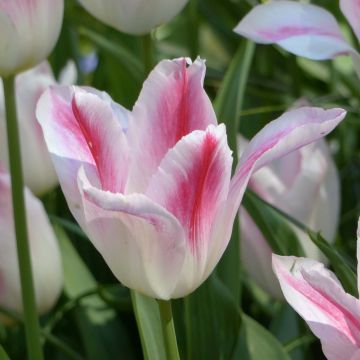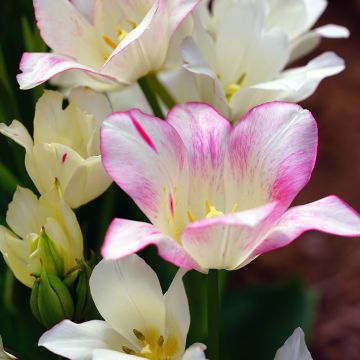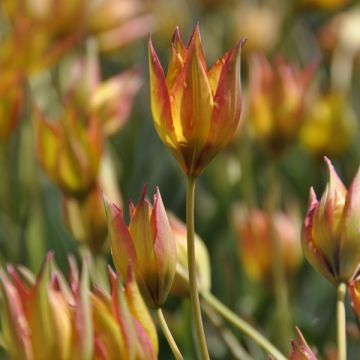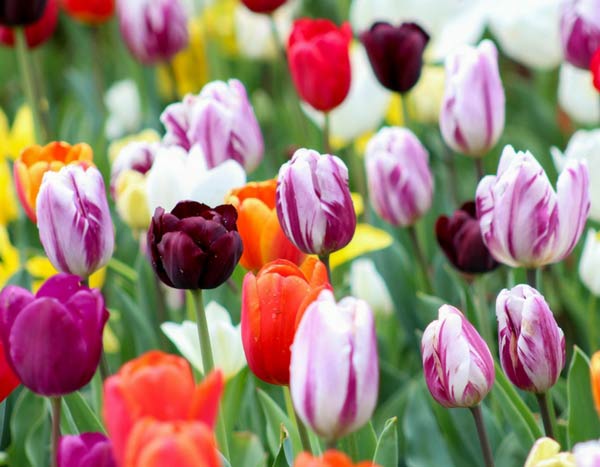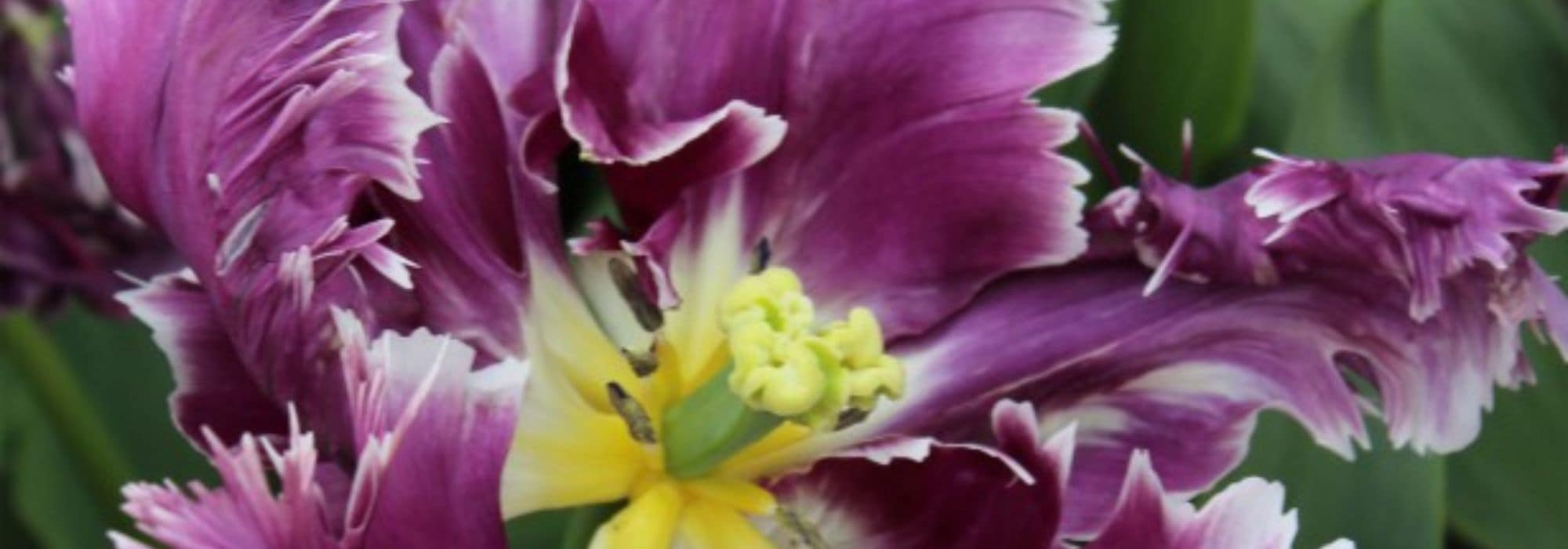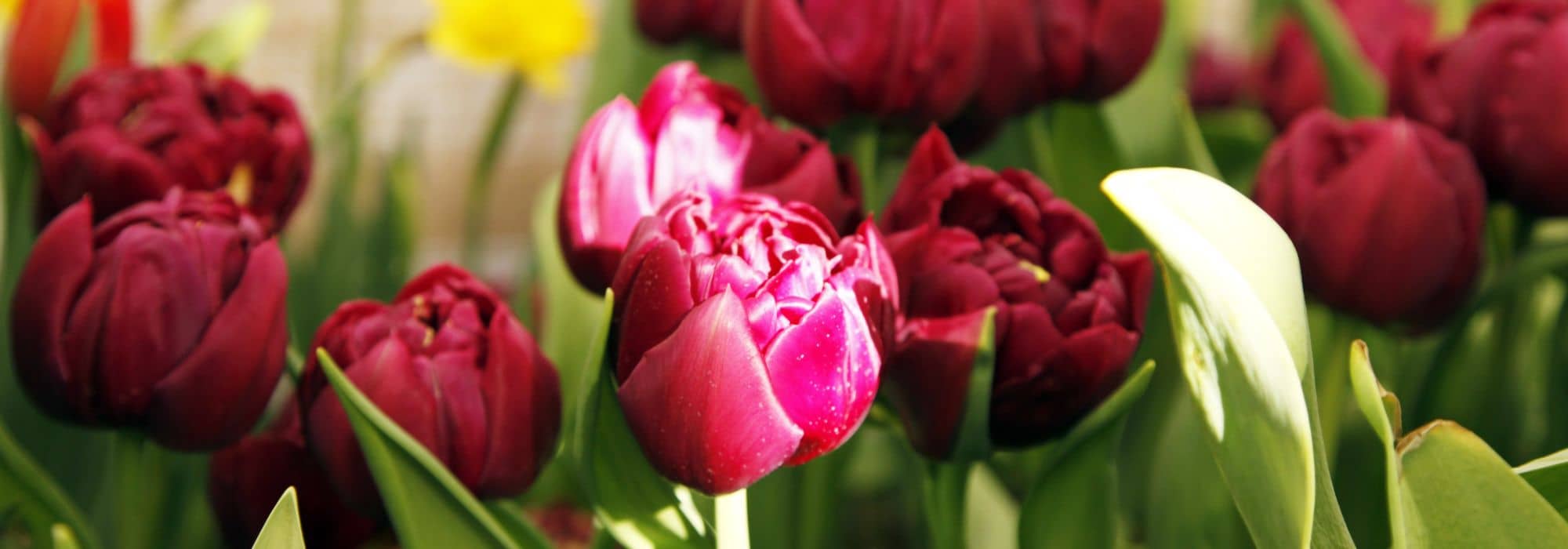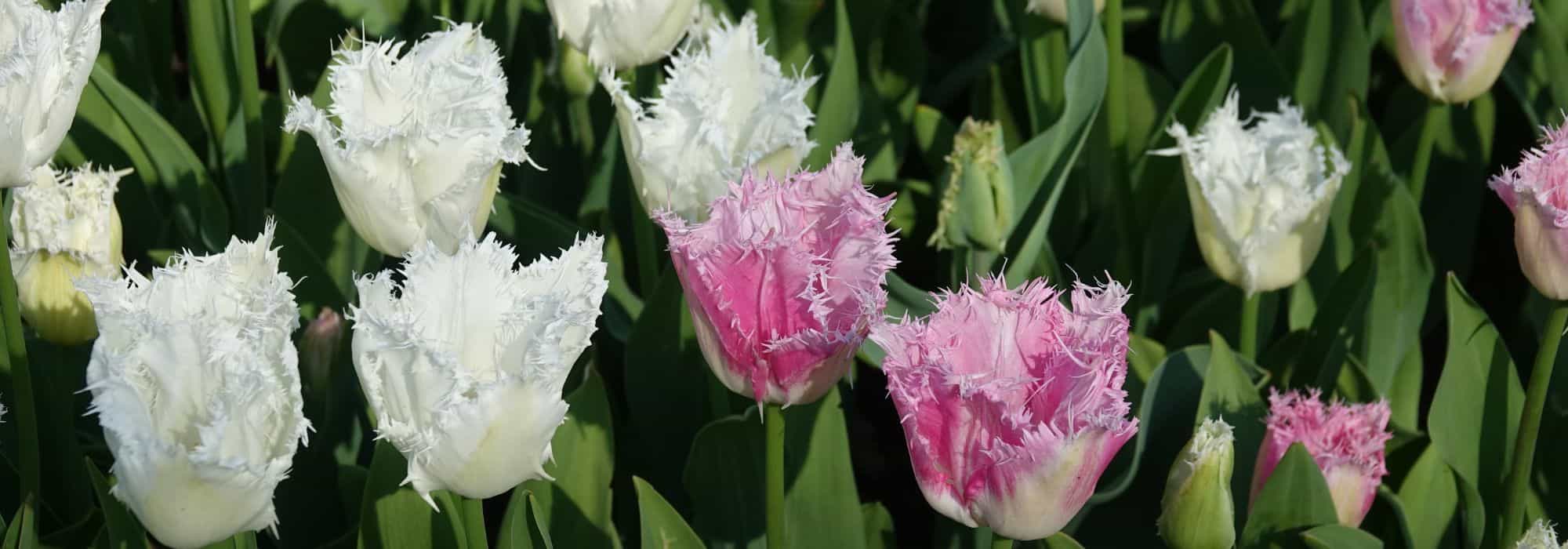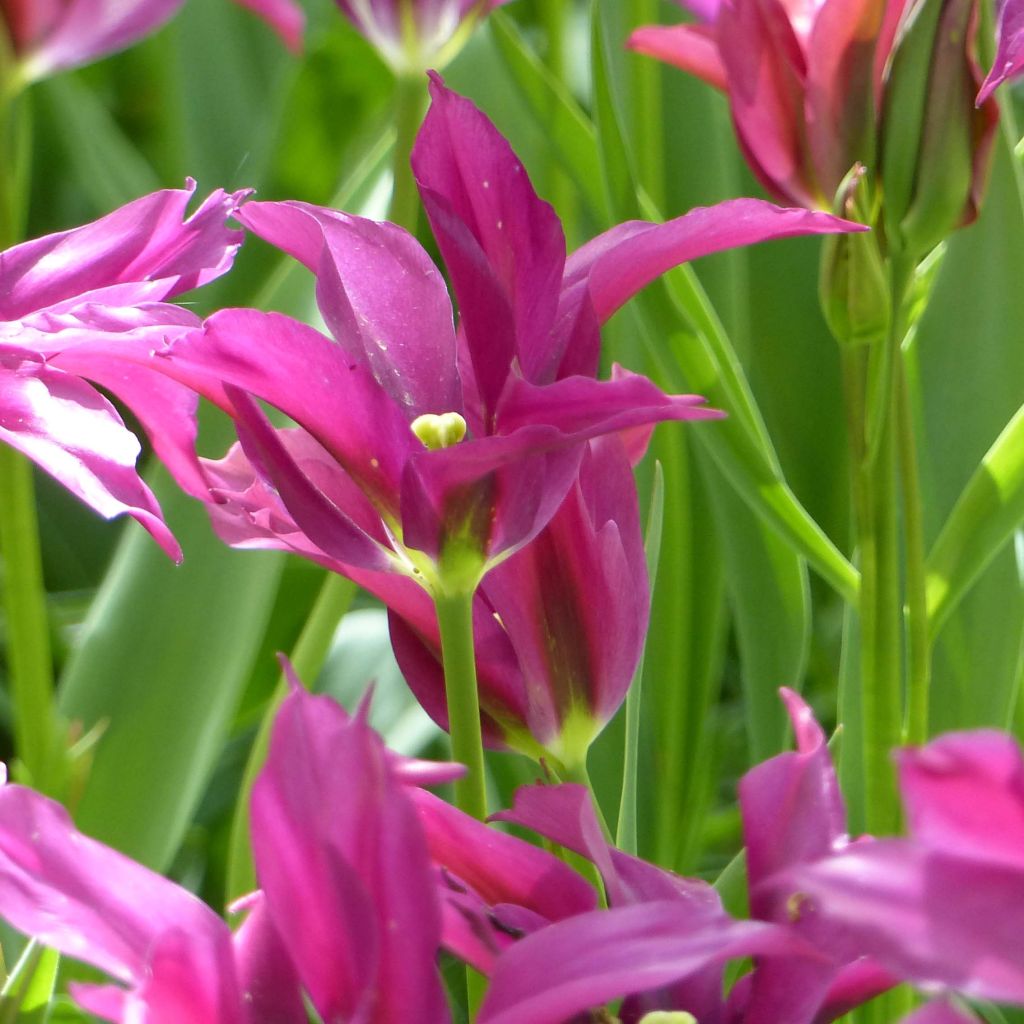

Tulipe viridiflora Purple Doll
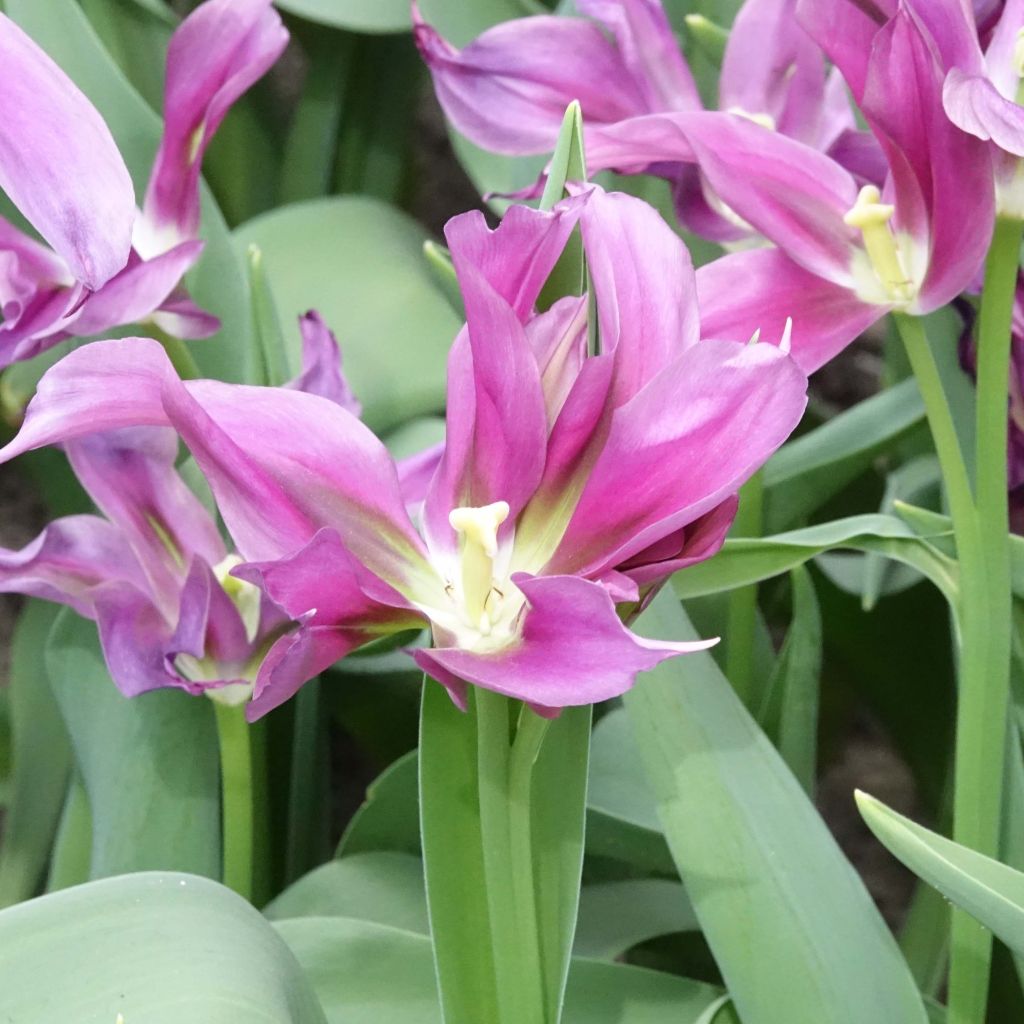

Tulipe viridiflora Purple Doll
Tulipa viridiflora Purple Doll
Tulipa viridiflora Purple Doll
Green-flowered Tulip, Viridiflora Tulip
Gorgeous tulips, very elegant! In a Tyrian purple hue, with finely etched petals.
Domi, 09/05/2025
Special offer!
Receive a €20 voucher for any order over €90 (excluding delivery costs, credit notes, and plastic-free options)!
1- Add your favorite plants to your cart.
2- Once you have reached €90, confirm your order (you can even choose the delivery date!).
3- As soon as your order is shipped, you will receive an email containing your voucher code, valid for 3 months (90 days).
Your voucher is unique and can only be used once, for any order with a minimum value of €20, excluding delivery costs.
Can be combined with other current offers, non-divisible and non-refundable.
Why not try an alternative variety in stock?
View all →This plant carries a 6 months recovery warranty
More information
We guarantee the quality of our plants for a full growing cycle, and will replace at our expense any plant that fails to recover under normal climatic and planting conditions.

Would this plant suit my garden?
Set up your Plantfit profile →
Description
Tulip viridiflora 'Purple Doll' is a beautiful variety with deep purple star-shaped flowers, streaked with dark green. It has a naturally compact habit, borne on short, sturdy stems that are resistant to bad weather. Its natural elegance, with its slender flowers and tapered petals, resembles that of lily-flowered tulips. Its late flowering in May is ideal for creating charming and natural combinations with biennials or annuals such as wallflowers, poppies, Mahon's juliennes, and forget-me-nots.
Tulip viridiflora 'Purple Doll' belongs to the Liliaceae family. Of horticultural origin, it is currently classified in Division 8, which is currently the least significant group, closely related to late single tulips. Their main characteristics are late season flowering, and striped or streaked green flowers. The 'Purple Doll' variety is the result of a cross between the pink variety 'Doll's Minuet'. 'Purple Doll' will reach a height of 35cm (14in) when in bloom. Perched on strong stems, well above the widely lanceolate leaves, the narrow cup-shaped flowers, 6cm (2in) wide, resemble those of lily-flowered tulips. Their six dark purple "petals" (more precisely tepals) are distinguished by the green flame that runs through them from bottom to top. Flowering takes place in May, at the end of the tulip season. Its flowers remain beautiful for a long time, at least three good weeks. It is an excellent cut flower.
Tulip viridiflora 'Purple Doll' can be paired with both biennials and perennials, or planted in small clusters in rockeries. You can plant it with pink daisies or pansies. It is a charming addition to your flower beds. Its dark hue makes harmonious combinations with tulips in lighter shades, such as 'Doll's Minuet', or white tulips such as 'Très Chic'. This maximises the flowering period in flower beds. It can be planted in borders, rockeries, pots, and containers. This tulip beautifies balconies and patios very well. It is ideal for creating sumptuous bouquets. Only use a little water in a vase. If your tulips open too quickly, you can add two to three ice cubes to the vase each day.
Tulip species are found throughout most of the Old World, from Western Europe to China and Japan, including Eastern Europe, Asia Minor, and Central Asia. Their distribution range also includes North Africa and the Indian subcontinent. The centre of diversity for the genus is in the Pamir and Hindu Kush mountains and the steppes of Kazakhstan.
There are various wild species, many of which are endangered. These include large adventive tulips from cultivated fields, the most well-known being the Agen tulip (Tulipa agenensis), as well as small tulips found in wooded areas or among rocks in the mountains. In cultivation, they are called "botanical tulips", and one of the most common is the wild tulip (T. sylvestris), which used to often grow sheltered by vines and whose subspecies, australis, is known as the southern tulip.
Tulipa viridiflora Purple Doll in pictures


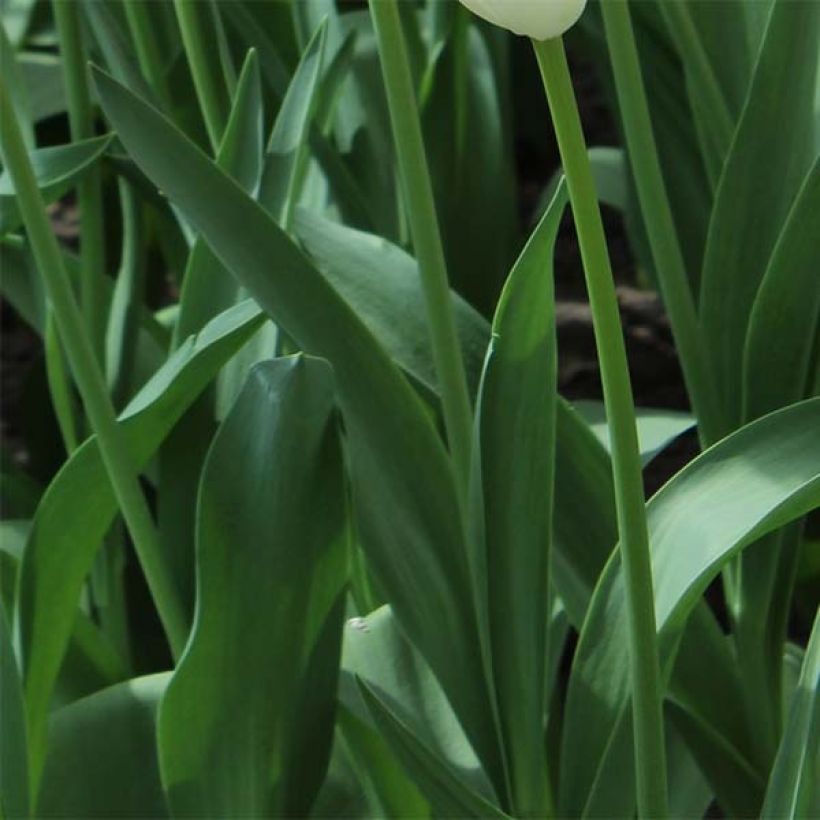

Plant habit
Flowering
Foliage
Botanical data
Tulipa
viridiflora
Purple Doll
Liliaceae
Green-flowered Tulip, Viridiflora Tulip
Cultivar or hybrid
Other Tulips A to Z
View all →Planting and care
Plant the bulbs from September to December for a beautiful spring flowering. Choose a sunny or a partially shaded area. Plant the bulbs in light, fertile, well-drained, and deeply loosened soil, at a depth of 15cm (6in). Space the bulbs 15cm (6in) apart (making sure they do not touch each other) to achieve a mass effect. Simply water regularly, especially during dry winters, and cut the flower stems after flowering. Allow the leaves to completely dry before cutting them. Apply a balanced liquid fertilizer every week during the first month.
Planting period
Intended location
Care
Planting & care advice
-
, onOrder confirmed
Reply from on Promesse de fleurs
Haven't found what you were looking for?
Hardiness is the lowest winter temperature a plant can endure without suffering serious damage or even dying. However, hardiness is affected by location (a sheltered area, such as a patio), protection (winter cover) and soil type (hardiness is improved by well-drained soil).

Photo Sharing Terms & Conditions
In order to encourage gardeners to interact and share their experiences, Promesse de fleurs offers various media enabling content to be uploaded onto its Site - in particular via the ‘Photo sharing’ module.
The User agrees to refrain from:
- Posting any content that is illegal, prejudicial, insulting, racist, inciteful to hatred, revisionist, contrary to public decency, that infringes on privacy or on the privacy rights of third parties, in particular the publicity rights of persons and goods, intellectual property rights, or the right to privacy.
- Submitting content on behalf of a third party;
- Impersonate the identity of a third party and/or publish any personal information about a third party;
In general, the User undertakes to refrain from any unethical behaviour.
All Content (in particular text, comments, files, images, photos, videos, creative works, etc.), which may be subject to property or intellectual property rights, image or other private rights, shall remain the property of the User, subject to the limited rights granted by the terms of the licence granted by Promesse de fleurs as stated below. Users are at liberty to publish or not to publish such Content on the Site, notably via the ‘Photo Sharing’ facility, and accept that this Content shall be made public and freely accessible, notably on the Internet.
Users further acknowledge, undertake to have ,and guarantee that they hold all necessary rights and permissions to publish such material on the Site, in particular with regard to the legislation in force pertaining to any privacy, property, intellectual property, image, or contractual rights, or rights of any other nature. By publishing such Content on the Site, Users acknowledge accepting full liability as publishers of the Content within the meaning of the law, and grant Promesse de fleurs, free of charge, an inclusive, worldwide licence for the said Content for the entire duration of its publication, including all reproduction, representation, up/downloading, displaying, performing, transmission, and storage rights.
Users also grant permission for their name to be linked to the Content and accept that this link may not always be made available.
By engaging in posting material, Users consent to their Content becoming automatically accessible on the Internet, in particular on other sites and/or blogs and/or web pages of the Promesse de fleurs site, including in particular social pages and the Promesse de fleurs catalogue.
Users may secure the removal of entrusted content free of charge by issuing a simple request via our contact form.
The flowering period indicated on our website applies to countries and regions located in USDA zone 8 (France, the United Kingdom, Ireland, the Netherlands, etc.)
It will vary according to where you live:
- In zones 9 to 10 (Italy, Spain, Greece, etc.), flowering will occur about 2 to 4 weeks earlier.
- In zones 6 to 7 (Germany, Poland, Slovenia, and lower mountainous regions), flowering will be delayed by 2 to 3 weeks.
- In zone 5 (Central Europe, Scandinavia), blooming will be delayed by 3 to 5 weeks.
In temperate climates, pruning of spring-flowering shrubs (forsythia, spireas, etc.) should be done just after flowering.
Pruning of summer-flowering shrubs (Indian Lilac, Perovskia, etc.) can be done in winter or spring.
In cold regions as well as with frost-sensitive plants, avoid pruning too early when severe frosts may still occur.
The planting period indicated on our website applies to countries and regions located in USDA zone 8 (France, United Kingdom, Ireland, Netherlands).
It will vary according to where you live:
- In Mediterranean zones (Marseille, Madrid, Milan, etc.), autumn and winter are the best planting periods.
- In continental zones (Strasbourg, Munich, Vienna, etc.), delay planting by 2 to 3 weeks in spring and bring it forward by 2 to 4 weeks in autumn.
- In mountainous regions (the Alps, Pyrenees, Carpathians, etc.), it is best to plant in late spring (May-June) or late summer (August-September).
The harvesting period indicated on our website applies to countries and regions in USDA zone 8 (France, England, Ireland, the Netherlands).
In colder areas (Scandinavia, Poland, Austria...) fruit and vegetable harvests are likely to be delayed by 3-4 weeks.
In warmer areas (Italy, Spain, Greece, etc.), harvesting will probably take place earlier, depending on weather conditions.
The sowing periods indicated on our website apply to countries and regions within USDA Zone 8 (France, UK, Ireland, Netherlands).
In colder areas (Scandinavia, Poland, Austria...), delay any outdoor sowing by 3-4 weeks, or sow under glass.
In warmer climes (Italy, Spain, Greece, etc.), bring outdoor sowing forward by a few weeks.































